BEYOND THE COUPLE
As our creative venture progressed and other people were attracted to participate, James and I saw that, in order to be true to history and to the tantric ideal, we needed to give a broader treatment of sexuality than we first had thought. Consequently Venus and Her Lover presents the love between man and woman, and also goes beyond the couple. To maintain the integrity of the art project, we had to broach the subjects of the secret dalliance, dakinis, homosexuality, and alternative partnering.
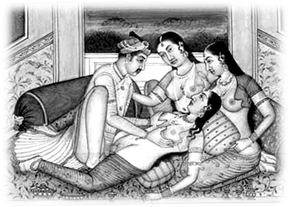
Illustration from Kama Sutra (19th century?)
Although modern social convention dictates that the only morally acceptable sexual union between two people is a monogamous legal marriage of husband and wife, this model does not hold in all cultures, nor by any means has it been the ideal. In fact, given the rate of adultery (37%-70% of men admit to extramarital affairs, and 29%-50% of women do [ Love without Limits, p.3]), it would seem that even subscribers to the institution of monogamy cannot uphold it. Nature’s urges run against it. Scientific study has proven that what researchers term EPC’s (“extra-pair copulations”) among mammals is the norm, even among species where a couple may share child rearing. Evolutionary biologist David P. Barash reports that, among animals, “social monogamy . . . and sexual monogamy are very different things. The former is common; the latter is rare.” He notes that even the swan, long thought to be the paragon of sexual fidelity, is not sexually monogamous. [“Want a Man, or a Worm?” by David P. Barash] Barash writes, “Not surprisingly, before the homogenization of cultures that resulted from Western colonialism, more than 85% of human societies unabashedly favored polygamy. In such societies, men who accumulate power, wealth and status gain additional wives and consorts.” From a biological point of view, the alpha male is appealing to the females, and so naturally spreads his seed more, leaving more descendants. Barash relates this basic fact of biology as the genetic impulse that has made political leaders and rock stars notoriously adulterous. They are then toppled from their pinnacle of fame by a public that demands monogamy from their role models.

Lakshman Temple at Khajuraho , India
(950-1050 CE)
Photo: B.Tzigany
For millennia, in tribal as well as highly civilized societies, polygamy (having more than one spouse) was not unusual. From India to China ancient texts outline the functions and etiquette of polygamous marriage. Greek mythology, the basis of Western culture, is replete with stories of the sexual escapades of the goddesses and gods on Mt. Olympus and among mortals. Venus (Aphrodite), although formally married to Vulcan (Hephaestos), had sexual liaisons, often resulting in children, with Mars (Ares), Mercury (Hermes), Bacchus (Dionysus), Neptune (Poseidon), Pygmalion, Adonis, Anchises, Nerites, and others. What else would you expect from the Goddess of Love and Beauty?
In the Venusian temple at Paphos on Cyprus, young women were trained in the arts of love, so that they could then act as sexual initiatresses to other men and eventually their husbands. [Sexual Secrets, p.176] These sexually active initiates were considered virgins until formally married. Any children resulting from the sacred sexual rites were considered virgin births and were raised as “golden children” by the priestesses of the temple. In ancient civilizations, priestesses taught the powers, benefits, and dangers of sex. It was considered sacred knowledge.
The Secret Dalliance
Bisexuality immediately doubles your chances
for a date on Saturday night.
~ Rodney Dangerfield

Kandariya Mahadeva Temple at Khajuraho, India (950-1050 CE) Photo: Aotearoa
For many of us who groped through our earliest sexual mysteries in the back seat of a car with our peers, the idea of anything but a possessive, exclusive relationship might seem strange. There exist, however, many variations of human relation that can be responsible, expansive, and loving. In Taoist Tantra of ancient China, the secret dalliance promoted several women with one man. Two women loving each other and a man enhanced the women’s receptive, compassionate nature, as well as stoking a greater sensuality. Two men loving one woman required greater care, in order to avoid bringing out the aggressive, territorial nature of men; therefore, it was discouraged. According to the Chinese, several women could harmonize the creative, yin force of the female principle with the focusing yang force of the male principle.

Illustration from Kama Sutra (19thc.?)
The Taoist secret dalliance was known to the Hindu tantricas as yogini chakra. It was cultivated as more advanced sexuality among the middle and upper classes. A man making love with several women is depicted in Konarak Temple (the “Black Pagoda”) on the Bay of Bengal. A woman being pleasured by several men is depicted in the Shiva temple of Jagan Nath in Kathmandu, Nepal. In the Khajuraho complex of temples (built between 950-1150 CE), in Madhya Pradesh in India, sculptures of men and women engaged in group sex and tantric yoga postures (often with the aid of dakinis) celebrate variations on the theme of erotic pleasure.
Dakinis, which appear in both Hindu and Buddhist Tantra, are semi-divine women who variously serve as initiatresses, spirits who can bestow misfortune or blessings, wisdom goddesses, angels of death who comfort the dying with a final “kiss of peace”, or the sexual partners of yogis. In tantric ritual, where the woman personifies the goddess Shakti and the man embodies the god Shiva, the lines of divine and human blur. Thus, in a ritualistic sense, any woman may become a dakini. Known as “Sky Walkers”, dakinis have the power to travel through dimensions. In our work, dakinis enter the picture primarily as attendants to lovers.
Polygamy in History
Polygamy, literally “many marriages”, describes when a person takes more than one spouse. Polygyny, in which a man is married to several women, has been the most common form of polygamy. Because such a large chunk of our known history has taken place under the rule of the Patriarchy, polygynous marriages have also been the scene of the subjugation of women. The shift from partnership to dominator lifestyles can be noted in Sumer, where Urukagina outlawed polyandry (one wife with several husbands) in 2350 BCE. Later, by Babylonian law, a man could have one official wife and as many secondary wives and concubines as he could support. By this time, if a wife should speak against her husband, he had the right to smash her mouth with a hot brick.

Harem Fountain (1875)
by Frederick Arthur Bridgman
In the Near East, it became customary for Hebrew and Babylonian men to manage harems. Women – first the property of the father, then of the husband – were veiled, cloistered, and consigned to the production of a male heir for their husbands. Concubines, also the sexual partners of the man of the house, had even less rights. Kublai Khan, the Mongol conqueror, kept a harem of 30-40 wives. Solomon, the Hebrew king who ruled in the 10th century BCE, had 700 wives and 300 concubines. In Islam, Muhammad advised his followers: “You may marry other women who seem good to you – two, three, or four of them. But if you fear that you cannot maintain equality among them, marry one only or any slave-girls you may own. This will make it easier for you to avoid injustice.” (Qur’ān IV:3). Although the polygamous marital arrangement is not deleterious in itself, its institution in the Muslim culture allowed the imprisoning of women in harems and the denial of education and basic freedoms to them. Comparing women’s fates in medieval Europe, however, it can be argued that during the Arab hegemony from the Mediterranean to Persia, Muslim women’s standards of living may have been higher.

Illustration from Shunga album (1680‘s), Japan,
by Hishikawa Moronobu
While the Arabic book, The Perfumed Garden for the Soul’s Recreation (15-16th centuries), guided the husband who sought sexual pleasure for himself as well as his lovers, the KamaSutra and Ananga Ranga (India), Important Matters of the Jade Chamber (China), and other pillow books (Japan) taught the health, energetic, and emotional benefits of happy sexual relations. In The Classic of the Plain Girl (Su Nü Ching, from the 2nd-3rd centuries BCE), the legendary Yellow Emperor discusses the tao of yin and yangwith his advisors: the Plain Girl, the Mysterious Girl, and the Rainbow Girl. The women advise him about arousal techniques, ejaculation control, absorbing essence, storing energy, and therapeutic lovemaking for attaining a stronger

Bound foot of a Chinese woman,
19th century
constitution and longevity. In China, where it was customary for a noble to have over 30 wives and a member of the middle class to have 3-12 wives, a husband consulted such manuals, as well as his elders, for tips on how to maintain harmony in his household. He needed to count on peace and stability on the home front so that he could build his career, which would in turn provide for all. It was expected for the man to not only financially support his wives and concubines, but also treat them respectfully and satisfy
their emotional and sexual needs. From Tao An: “There is a Secret Dalliance known as the Heavenly and Earthly Net whereby people indulge in sexual play like the birds and beasts, many females with a single male. It is believed to be a method of averting calamities and potentizing the whole country.” [Sexual Secrets, p.325]
It must not be overlooked that polygamy has been a venue for cruelty – crippling girls so they would have sexy “lotus feet” in China (foot binding); burning widows in India (suttee, from sati, “virtuous woman”); and castrating men (eunuchs) to guard harems in the Arab empires. In addition, it was the social arrangement through which lovemaking was advanced as an art and a science. Unlike the Judeo-Christian world, these Asian societies encouraged natural sexual feelings among women and men as a means to a happy, productive life.
Before the Couple
Having sex is like playing bridge. If you don’t have a
good partner, you’d better have a good hand.
~ Woody Allen
Seen from an energetic perspective, female energy (Shakti in Hinduism, Yum in Tibetan Buddhism, Yin in Taoism), which resides at the base of the spine, must travel to meet male energy in the head (Shiva/Yab/Yang). When this mystical union takes place, we become balanced. Many contemporary neo-tantra teachers emphasize this process as the basis for our sexuality as individuals. Margo Anand, a world-renown neo-tantra teacher, asserts that each of us must take responsibility for our own sexual pleasure by learning our own bodies so that we know what turns us on. She calls this self-pleasuring. In her book, The Art of Sexual Ecstasy [p.196], she writes,

The Dream of the Fisherman’s Wife
(c.1820), woodcut, by Katsushika Hokusai , Japan
Masturbation has something cold and clinical about it, something furtive and shameful that separates people from their hearts and prevents self-acceptance. Self-pleasuring, on the other hand, implies that it is good and healthy for the self to be pleasured, celebrated, and enjoyed. It also suggests that the whole body is involved, not just one part of it.
Self-pleasuring allows us to explore and love our own bodies, as well as to open our minds to our sexual fantasies. The point is not how many orgasms to have, but to increase our capacity for enjoyment so that we become orgasmic. On the way, of course, we can drop our conditioned guilt, shame, fear, and negative self-image. The more these obstacles are cleared out, the more easily ourkundalini energy can flow.
The Gay Life and Homophobia
The couple is an ideal place for male (yang) and female (yin) energies to dance, and the integrity of the union of these two energies is a cornerstone to tantric practice. In essence, it does not matter whether it takes place between two men or two women. The driving force behind passion is the play of opposites, and David Deida, in his book,Intimate Communion – Awakening Your Sexual Essence, describes the yang drive for truth, mission, freedom, confident directionality, and pushing boundaries to transcend; and the yin ability to flow, feel, nurture relationship, and shine with radiance. Everyone – man or woman – has one of these aspects stronger than the other. Deida writes, “Whenever someone who is animating Masculine energy comes into the vicinity of someone who is animating Feminine energy in the moment, an arc of polarity flows between them. . . Sexual polarity is a magnetic force, a natural force . . . ” [Intimate Communion, p.24] Often referred to as “chemistry”, it can be a very exciting part of loving relationships, heterosexual or homosexual.

Men loving men,
fresco from the Tomb of the Diver
(475BCE), Italy
Homosexuality, which Oscar Wilde referred to as “the love that dare not speak its name” (from a poem by his lover Sir Alfred Douglas), seems always to have been part of society. Since the 1950’s and the Kinsey Reports on sexuality, we understand that at least 4% of white males in the American population were exclusively homosexual on a lifelong basis, and 10% had spent at least three years in homosexual relations. Furthermore, 37% had had sexual contact with another man. [Masters and Johnson on Sex and Human Loving, by William Masters, Virginia Johnson, and Robert Kolodny, Boston: Little, Brown, and Company, 1988, p. 345]. In these open times, more people are “coming out”, so most of us now probably know someone who is gay. In ancient Greece, homosexuality and bisexuality among the aristocracy were not unusual. The teacher-disciple relationship between the middle-aged man and adolescent boy in Athens or Sparta often was sexual in nature. Socrates regarded the older man’s responsibility to be “the cultivation of moral perfection in the beloved” [ Sex in History, p. 86] Plato was gay, and the Roman poets Horace and Martial were bisexual. Ignoring this fact affects not only our picture of them personally but also our understanding of their philosophies. Compare Plato’s words with the Jowett translation of them: [from The Homosexual Matrix, p. 217-218]
Plato: “Through the nightly loving of boys, a man, on arising, begins to see the true nature of beauty.”
Translation: “He who under the influence of true love rising upward begins to see that beauty is not far from the end.”

Erastes (lover) & Eromenos (beloved) Kissing, from Greek cup
(c.480 BCE),
by “the Briseis Painter”
As much as classical authors extolled the high-minded goals and “Platonic”, spiritual-love aspects of the pederastic relationship, Greek vase painting belies lusty scenes of anal intercourse, interfemoral (penis between thighs) connection, and passionate kissing between the older man and adolescent boy. No doubt one of the reasons that much “meeting of minds” happened in the gymnasium was  because of the view there: naked young men, their hard bodies shiny with olive oil, wrestling, running, and throwing discus. In Athens, pederasty was regulated by law, which delineated the permissible age of boys and limits placed on slave boys. In Rome, no emperor would pass anti-homosexuality laws at the risk of the army rising up (no pun intended) against him.
because of the view there: naked young men, their hard bodies shiny with olive oil, wrestling, running, and throwing discus. In Athens, pederasty was regulated by law, which delineated the permissible age of boys and limits placed on slave boys. In Rome, no emperor would pass anti-homosexuality laws at the risk of the army rising up (no pun intended) against him.
That the pederastic relationship was predatory is a point to consider. In ancient Greece and Rome, we see little evidence of homosexual relationship between two equals. The myth of the rape of Ganymede depicts the older, all-powerful Zeus swooping down in the form of an eagle (a raptor bird) to abduct the youth Ganymede, described by Homer as “the most beautiful of mortal men”. Once on Olympus, he served as Zeus’ lover and cupbearer to the gods. Whether the young Trojan boy was grateful to be a servant on Olympus or unwillingly imprisoned there, the fact remains that in the story, he was kidnapped by the older man. Domination in relationship reflected the rules of the road in patriarchal society.

Shunga detail, woodblock print (c.1750),
by Suzuki Harunobu, Japan
Homosexual yearnings of adolescents have been recognized and accepted in many cultures. Arab men often would escape the demands of the harem to have affairs with 18-year-old boys. Among the Maya of Central America, teenage boys did their sexual explorations with other boys (usually slave boys), but did not have intercourse with girls until they intended marriage. In the Mojave and Zuni tribes of North America, such male-male exploration was regarded as normal.
Several Native American tribes included berdaches, who were men who dressed like women and married other men. The Nzemas of Ghana and the Nubas in Sudan had a ceremony for marriage between men. Buddhist monks of 10th century Japan were known to be loving guardians to their younger disciples. Later Japanese warriors even practiced a kind of gay marriage. The age gap narrowed, so that by the 17th century, men loving men was the norm in the (all-male) Japanese theater. [Sex in History, p. 86]. Over China’s long history, homosexuality between consenting adults, although not considered the ideal balance of yin andyang, saw periods of popularity, especially during the Han (0-200 CE) and Sung (960-1127 CE) Dynasties.
Berdache, originating from the French bardache “male prostitute” or Italian baldracca(“whore”), is considered a pejorative label slapped on by the white conquerors for the gay, bisexual, or transgendered characters they encountered in so many of the tribes they met in America. How confusing for the Europeans who found women dressed as men who acted as chief, warrior, guide, hunter, and other male roles, and men dressed as women who did women’s work (basket weaving, healing, beadwork, and rituals)! The Sioux called them winkte, and the Zuni called them lhamana; modern Indians now refer to them as Two-Spirits, in recognition of the masculine and feminine spirits both dwelling in one body. Whereas the European invaders disparaged them, within the tribes themselves Two-Spirits were honored as very special people. It was believed that Two-Spirits understood the polarities of human beings and could identify with the bisexual nature of the Great Spirit or Supreme Creator.

We’Wha (1849-1896),
Zuni Two-Spirit
Hence, they were often the medicine people of their tribe. Male Two-Spirits might take a male wife in addition to a female wife; female Two-Spirits might marry another woman; and any other combination of loving liaison
was possible and accepted. It seems, then, that native peoples did not fall into the “opposite sexes” mind trap and allowed “middle sex” or “third gender” possibilities of human expression.
Since Judeo-Christian dogma sanctioned sex only for procreation, same-sex loving has been condemned as an unnatural abomination. Although the Bible does not describe the sins for which Sodom and Gomorrah were destroyed, in the first century CE, Philo espoused the opinion that homosexuality was one of them. Emperor Justinian believed the plague that devastated Constantinople in the 6th century was due to the city’s immorality, thereby establishing the doctrine that homosexuality endangered the State. His stance is not surprising, since Church and State were still undifferentiated at that time in history, and the crime of heresy could be equated with the crime of treason. After the terrorist attacks in New York and Washington on September 11, 2001, tele-evangelist minister Jerry Falwell blamed the attacks on “gays and lesbians” (as well as feminists, pagans, and the ACLU), saying they had brought down God’s punishment. The crime Philo, Justinian and Falwell refer to became known as sodomy. In many places of the world, including states in the United States, sodomy laws prohibit anal and oral sex, and even sex outside marriage. Such “criminal activity” must raise the question: Who is the victim?
The recent hubbub over gay marriage reflects society’s intolerance of same-sex loving couples. Invariably those arguing against it justify their opposition with quotes from their holy books, and admonishments that our society/the State is endangered by it. But what, pray tell, is the danger? A loss of control over those who refuse to comply with a particular mythology?
In addition to being classified as a sin and a crime, with the psychological theories of Freud, it became a disease. Many psychotherapists since have set out to “cure” their patients (and continually failed). With the institutionalization of homophobia, for centuries people have been persecuted and discriminated against because of their sexual preference. Did the young men who in 1998 murdered Matthew Shephard, the Wyoming college student, know what was driving their hate crime? The destruction of an obscure town out of Genesis – then Justinian, Augustine, Thomas Aquinas and others put a spin on the story – which led to conclusions that could so possess a couple hayseed boys to brutally murder another . . . because he was gay?!? When do we wake up from this perverse dream?
Riane Eisler, in her book, Sacred Pleasure, presents another slant on the Church’s sexual dysfunction. Catholic mystics portray the Church – and more specifically, the male priests – as “brides of Christ”. The subordinate male hierarchy marries the omnipotent male God: a gay marriage! The contradiction and confusion within the Catholic Church has also surfaced recently as thousands of Catholics come forward claiming they were sexually molested by their parish priests. [“Can the Church be Saved?” Time Magazine, April 1, 2002, ] The snickering jokes about pedophile priests and altar boys –

Oscar Wilde (on right) with his lover
Alfred Douglas, before the trial, 1894
Q: What do you give a pedophile priest who has everything?
A: A bigger parish.
— it turns out, were based on a widespread reality:
predatory priests as wolves in shepherd’s clothing, inflicting their pathos on their flock. As Susie Bright says, “Behind every erotic condemnation there’s a burning hypocrite.” [Full Exposure, p.117] Citing just one example: Cardinal Francis Spellman railed against sexual sins from the pulpit while entertaining a long line of male lovers.
In the twentieth century, gays began to find their identity and assert it. This proved to be difficult and dangerous. Oscar Wilde, who charmed many with his wit and flamboyance, also created an uproar in straight-laced Victorian English society. He was convicted of sodomy and sentenced to two years of hard labor. Broken by the experience, he died soon afterward, at the age of 46. Witty to the end, he is alleged to have said on his deathbed, “My wallpaper and I are fighting a duel to the death.
One or other of us has to go.”

J. Edgar Hoover & Clyde Tolson
Gay men in the arts (Truman Capote, Tennessee Williams, Rock Hudson, to name only a few) learned to keep their private lives private. Other men, in order to shield their lifestyle, went so far as to persecute homosexuality, thus “proving” their straightness. In 2006, evangelical minister Ted Haggard fell from grace when a male prostitute declared he had been Haggard’s lover for three years. Alongside fundamentalist ministers in their active condemnation of homosexuality are conservative politicians, who routinely are outed for their secret affairs. J. Edgar Hoover, head of the FBI, lived for years with his mate and assistant director of the FBI, Clyde Tolson. Yet he persecuted homosexuals, often aiding Senator Joseph McCarthy (who kept his sex life strictly in the closet) in his pursuit of Communists. Hoover and McCarthy protected one another’s secrets for years. Not until the Stonewall Riots of 1969, in which gays fought back against raids on gay bars in New York, did the Gay Liberation Movement throw open the shades on the oppression and hypocrisy of American society. Americans were taunted (and haunted) by the gay rights slogan, “We are your worst fear; we are your best fantasy.”
Why haunted? Whereas two women caressing each other may be tolerated (or even a turn-on), two men kissing makes the sexually-repressed gag. Dr. C.A. Tripp, inThe Homosexual Matrix, notes that “murder, graft, and a host of violent crimes, though strongly taboo, fail to stir the intensely personalized emotions that can be aroused by the homosexual”. [p. 226] This may be because certain elements of sex – kissing, fondling, sucking, moaning, etc. – are common to all lovers, regardless of gender. Therefore, the straight-laced straight can easily visualize himself/herself doing them, which sets the sin-crime-disease alarm bells ringing. These alarm bells do indicate that something is awry. It is not, however, the loving actions that are dangerous – it is the moral programming that does not jive with natural behavior. In Culture Clash – The Making of Gay Sensibility, Michael Bronski quotes Paul Goodman about the homosexual minority. “The minority is always a repressed part of the majority. . . the minority is always right in its demands, for it is moral and psychological wisdom for the majority to accept the repressed part of itself.” [“Notes from a Journal” in Nature Heals: Psychological Essays, edited by Taylor Stoehr, New York: Free Life Editions, 1977, p.246]. Accepting that same-sex loving is neither sin nor crime nor disease – but is, above all, loving – would make it so much simpler for all concerned. Then we can enjoy the beautiful moments when we, and others, are touched by love.

Walt Whitman (1819-1892),
American poet & humanist
For the one I love most lay sleeping by me under the same cover in the cool night,
In the stillness of the autumn moonbeams his face was inclined towards me,
And his arms lay lightly wrapped around my breast –
and all that night I was happy.
– Walt Whitman
from “When I heard at the close of day”
(the “Calamus” poems)
A FEW FAMOUS PEOPLE WHO WERE GAY OR BISEXUAL


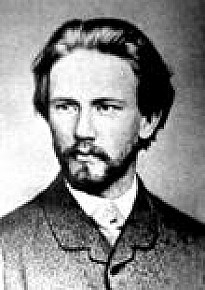






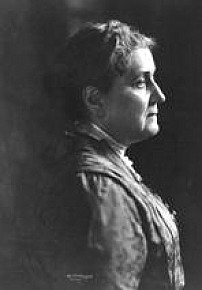
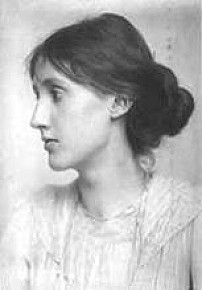
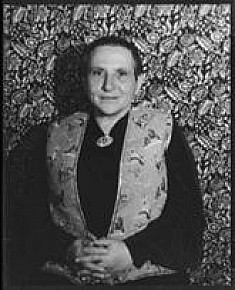

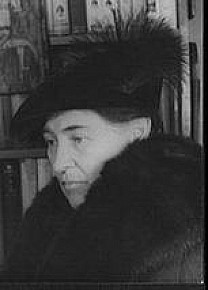



From the Island of Lesbos

Sappho by Édouard-Henri Avril (1843-1928), lithograph
Our words for female homosexuality – lesbianism and Sapphism – derive from the Greek island of Lesbos, where the famous poet Sappho taught women in her school the arts: music, dance, poetry, philosophy, and homosexual love. Though the majority of her writings were destroyed by Pope Gregory VII in 1073, what survived carries the clear voice of a strong woman from the 7th century BCE. Much of her poetry sings of love and Aphrodite’s power. For example: “Return”
O Gongyla, my darling rose put on your milk-white gown. I want you to come back quickly. For my desire feeds on your beauty. Each time I see your gown I am made weak and happy. I too blamed the Kyprian*. Now I pray she will not seek revenge, but may she soon allow you, Gongyla, to come to me again: you whom of all women I most desire.
– Sappho
[Sappho and the Greek Lyric Poets, p. 84, #203]
Throughout polygamous Asia and North Africa, lesbianism was accepted as the “harem effect”. Keeping all those wives and concubines in their quarters, their turn with the sultan or emperor coming one or two nights a year, what else would they do with their lonely nights? In most of the Muslim world today, however, homosexuals and lesbians may suffer lashings, prison, or death at the hands of the state (Yemen and Saudi Arabia, for example). In ancient India and Egypt, girls were expected to have girlfriends. They were brought up together, slept together, and often learned the arts of love together. This sisterhood relationship was considered normal and healthy. In India, a wealthy woman who had been raised with “special girlfriends”, or sakhis, would bring them along into her marriage. They would be her attendants in household activities as well as lovemaking. The sisterly relationship among loving women created a support system that certainly sweetened life during the long, iniquitous reign of the Patriarchy. Women today can take a lesson from this attitude and reject the competitiveness that has invaded the neighborhood gossip mill and office politics. Much better to count on a sister than to fight a rival.
In my American-as-apple-pie upbringing, lesbianism never figured into any relationship equation I was presented. So, in my early 20’s, when I fell in love with my girlfriend Mae, I had no reference points but the trustworthy nudges of my inner Venus. One summer afternoon Mae and I wandered into a cornfield to consummate a friendship that has lasted to this day. We discovered that we were both naturally bisexual, and so eventually gravitated to men for our primary relationships. But over the years we always came back together – often bedding our men in with us – feeling stabilized by our woman-to-woman intimacy and balanced by a network of loving connections.
Polyamory
All you have to do is fall in love.
~ Freddie Mercury

Koori domestic scene from
Australien in 142 Photographischen Abbildungen (1857)
by William Blandowski
The dyad (opposite sex couple) may be the basis of conventional marriage and procreation, but it is not the only possible family unit. Many tribal traditions in the world – including Native American, African, and Pacific Islander – share sexual partners and all participate in child-rearing. The saying, “It takes a whole village to raise a child” may be taken literally. One stable configuration is that of the triad (three equal partners), which multiplies the chances for fulfillment, division of labor, and diversity within a committed relationship. In some Koori (Australian Aboriginal) tribes, a mother could refrain from intercourse with her husband for a year or two after giving birth, allowing this function to be taken up by the other wife. Many female proponents of Mormon polygamy argue their families run better because the wives share not only their husband, but child-rearing and household chores.
I have experienced the advantages of polyamorous relationship. Aside from the variety in sexual thrills, there is the bond of sustaining connection. When my son was a preschooler, my girlfriend Marta and I expanded our friendship into a sexual relationship, which was eventually followed by the inclusion of my partner, Will. Through balmy Caribbean nights we explored our passion, generating heat and an emotional coherence. The three of us truly enjoyed each other, sharing meals, time at the beach, playtime with son Alex, and working on each other’s projects. During those years, my son received the benefits of this “one happy family” feeling, especially since Marta devoted much attention to him. Our ménage à trois changed form when Marta took another lover, for he did not fit in with us. Nonetheless, our friendship continued on in a nonsexual way, and we always considered Marta family. I am grateful that my son could grow up in the milieu of love we shared.
Openly sharing lovers is referred to as responsible nonmonogamy or polyamory. Given the high divorce rate (50%-70%) and similarly high re-marriage rate in modern society, the traditional couple in practice is tantamount to serial monogamy, or consecutive marriage. It is a bumpy road to travel: marriage, then divorce, then re-marriage, then divorce. Aside from the tremendous emotional toll, divorce has material costs, as quipped comedian Robin Williams:
Ah, yes, divorce, from the Latin word meaning to rip out a man’s genitals through his wallet.
When one partner seeks love outside a monogamous relationship, jealousy, abuse, divorce, or even murder in a “crime of passion” may result. Such reactions stem from taking entirely too seriously an institution that often restricts – instead of bolsters – the participants’ love and compassion for one another. Based on conditional love and following a dominator pattern, this set-up often leads to manipulation, suspicion, deceit, and “cheating”, which stunts the development of honest communication and the natural tendency to love others. At the least, monogamy needs a deeper look.

Scène erotique(1835)
by Peter Fendi
Even though monogamy is perfect for many people, it never made sense to me personally. When I first started to date, I could see no conflict in dating several guys at once. More than one boyfriend had to explain to me “the rules of the ring” (i.e. “You belong to me!”). I would lovingly listen to them, stir them up with my ideals of unconditional love, and then proceed to cultivate friendships with other boys. As far as I was concerned, there was no harm in this, especially since I was honest with all involved. Youthfully idealistic, I blithely went my own way, believing that open-hearted truth would surmount any relationship obstacles. Oddly enough, it worked out that way! As if protected by the golden aura of Venus, I shared romance and camaraderie with many people who are still friends to this day. Love, which for me was always a prerequisite for intimacy, has triumphed again and again. Perhaps because I was not promiscuous, I navigated the American high school scene without being labeled according to the prevailing double standard: a girl who dated many boys was a “slut” or “cheap whore”, whereas the boy who hooked up with many girls was a “star”, “stud”, or “player”, all terms that reflect the sexism and injustice of the patriarchal system.
At present, there are brave and sexy pioneers forging roads on the map of “new paradigm relationship”. From group marriage and polyfidelity (three or more adults committing to each other either exclusively or not) to open relationship (where outside lovers are welcomed), these people are discovering what works and what does not. Anyone who has tried to get along with one other person in a relationship can well imagine how complexity would multiply with additional partners. Ground rules are a must. In her book, Love Without Limits, Deborah Anapol details seven basic steps for functional polyamory. Here, briefly, they are:
(1) Know yourself.
(2) Heal yourself.
(3) Replace guilt and shame with self-acceptance and love.
(4) Master the art of communicating.
(5) Open yourself to sexual energy.
(6) Let jealousy be your teacher.
(7) Adopt a moral code.
It takes courage and commitment to maintain sexualoving relationship with more than one partner, especially in a sex-negative society. Love can create a sanctuary, however, in which we feel safe enough to let our fears, insecurities, and jealousies emerge. Once out, they can be examined and retired. Within a circle of accepting friends/lovers, we can make the valiant efforts necessary to liberate ourselves and our social institutions.
Awakened Monogamy
We pretend we can love without our illusions about love dying, pretend we can go on without superficial expectations dying, pretend we can progress and that our favorite flushes and rushes will never die. But in love, psychically, everything becomes picked apart, everything. The ego does not want it to be so. Yet it is how it is meant to be, and the person of a deep and wildish nature is undeniably drawn to the task.
~ Clarissa Pinkola Estés
Having taken a quick tour of relationship alternatives, we now come back around to the couple. Simply because monogamy is often difficult or suffocating does not mean that it cannot also be satisfying and liberating. It takes, however, the desire to grow personally and practice loving with another, recognizing that in your partner you have the person who knows you best, which means, ahem, that that person sees your most dysfunctional aspects (just as you see theirs).
A marriage stakes out the space where two people can confront their conditioning, emotional wounds, anger issues, guilt, duty, fears, blame habits, self-esteem, jealousy, and a whole host of cultural taboos. This treasure house of private knowledge is available only to those who are vulnerable enough to admit that they are not perfect, and that they want to heal the ragged parts of themselves. The husband or wife becomes not just the witness to the hidden or “shameful” parts of a person, but also the sympathetic support person for the healing process. In his book, Transformation Through Intimacy – The Journey toward Awakened Monogamy, Robert Augustus Masters recognizes relational intimacy as a gateway to a deeper, more authentic life. In other words, a holistic spiritual practice.
In this spiritual practice, vital skills are honed: communication (truth-telling, expression, and listening), emotional intelligence, taking responsibility for one’s actions, setting healthy boundaries, courage (especially when facing inner demons), developing a moral code, forgiveness, empathy, and compassion. And best of all: giving and receiving love. The trust nurtured in a healthy committed relationship yields not only intimacy between the partners, but intimacy with a person’s deepest aspects of being.
Robert Augustus Masters says,
Intimate relationship could be called the ashram of the twenty-first century – a place especially ripe with transformational possibility, a combination crucible and sanctuary for the deepest sort of healing and awakening, through which the full integration of our physical, mental, emotional, psychological, and spiritual dimensions is more than possible.
[Transformation Through Intimacy – The Journey toward Awakened Monogamy, p.2]
Love, Marriage, and the Baby Carriage

Russian Royal Family (1913),
Nicholas II & family
Photo: Levitsky Studio, Livadiya
An important aspect of relationship configuration is the child-rearing environment. Indeed the family is the cornerstone of a society: the Holy Trinity of Father-Mother-Child. My experience as a mother demonstrated the fallacy that “quality time is better than quantity time”. So much of being a loving parent is simply being there at any given moment. Quantity time insures quality time. So the aforementioned arguments of polygamists – that several parents can better cover all the bases – make sense. That was my experience in a ménage à trois.
Whatever form a committed marriage may take, it should provide consistency, guidance, tenderness, and safety for the resultant children.

La Sagrada Familia (1595)
by El Greco
While religious zealots may vehemently oppose the relationship alternatives discussed in this essay, it is these very religious extremists that are producing society’s problem children. Christian fundamentalists following the Biblical advice to beat their children (“Spare not the rod . . .”) in the name of discipline instill rage and violence in their offspring that will eventually find their way out. Authoritarianism and aggression share the same roof. States in the US which use corporal punishment in schools (many “Bible belt” states) correspondingly have higher murder rates and higher incarceration rates. [“Correlation between High Rates of Corporal Punishment in Public Schools and Social Pathologies” by John Benjamin Guthrow]. In Islamic fundamentalist societies where women are oppressed and abused, children are the secondary casualties of the system. According to Physicians for Human Rights, “97 percent of Afghan women they surveyed suffered from severe depression.” What kind of child results from a distant, abusive father and battered, depressed mother? A terrorist, according to many voices in modern psychology. In addition to inflicting their rage on others, terrorists also fit the psychological profile of sexually abused children. Surviving suicide bombers described bomb explosions as an emotional release (i.e. orgasm) and martyrdom as escape from their crushing sense of sinfulness (perhaps projected onto modernist, Western forces such as television and movies?). [“The Childhood Origins of Terrorism” by Lloyd de Mause]. As Australian psychotherapist Robin Grille states, “To look at the impact of religious fundamentalism on the world stage is to study the effects of mass child abuse on society at large.” [“Fundamentalism: A War Against Children”]. Religious fundamentalists – Christian, Islamacist, ultra-Orthodox Jewish, or Hindu – would dutifully wall us all up into sado-masochistic marriages. Thus the wretched pathos of patriarchal domination could be passed from generation to generation.
To take a stand for your own loving relationship style affects not just your happiness, but the stability of our society.
The Power of Love
Love is everything it’s cracked up to be … It really is worth fighting for, being brave for, risking everything for.
~ Erica Jong
We can spend a rainy afternoon debating the merits and morality of celibacy, monogamy, and polyamory, if we want. We can declare homosexuality immoral or monogamy too rigid. The preceding discussion points out that many variations have been tried, so they are possible. The crux of the matter is this: freedom and love. Eachperson should be able to freely choose the relationship style that best suits him or her. It is, after all, the most personal of choices. This freedom of choice is glorified through the art of Venus and Her Lover. Our art is a manifesto to the power of love to transform ourselves and our world.
Venus, the Western archetype of sensual love, offers a vision of how to navigate through the potentially thorny path of relationship: she knows who she is and she follows her heart. With more love affairs than any of the other goddesses of the Greco-Roman pantheon, she still never played the victim. Astrologically and psychologically, Venus exemplifies the sexually liberated woman as well as the nurturing mother. Her passion to know her chosen lover and to consummate their union leads to a process of creation. In her book, Goddesses in Everywoman, Jungian psychotherapist Jean Shinoda Bolen calls Aphrodite (Venus) “the alchemical goddess”. She writes, “Whenever growth is generated, a vision supported, potential developed, a spark of creativity encouraged – then Aphrodite is there, affecting both people involved.” [Goddesses in Everywoman, p.225] ThroughVenus and Her Lover, the goddess has evolved, too, no longer consumed by her emotional attachments but now able to stand in her own self-reliance. We each can invoke Venus into our lives to help us to open our hearts to ourselves and to others. The more practice we gain in loving unconditionally, the further we can see to the horizon, revealing a resplendent panorama of possibilities for our happiness. Venus would approve.
As we accept ourselves, an ardor wells up in us that compels us to share with another. Then, with a stable base in the couple, loving relationship may, if so desired, extend to include others. Tantric texts caution that the secret dalliance and other polyamorous arrangements must not be attempted without due maturity, responsibility, and mutual trust. Otherwise, the awesome energy of kundalini can result in destructive consequences. With this understanding, tantricas may join with other lovers, as well as invite dakinis and other attendants to the lovemaking ritual. Indeed, the presence ofdakinis is most desired, for they bestow feminine erotic wisdom. Some of the paintings and poetry of Venus and Her Lover depict other participants in the erotic life of Venus and Mars. The amplified power of love that results when the Goddess of Love joins with the God of War is big enough to accommodate others. Their unconditional devotion inspires the blossoming of love beyond the boundaries of the couple.

